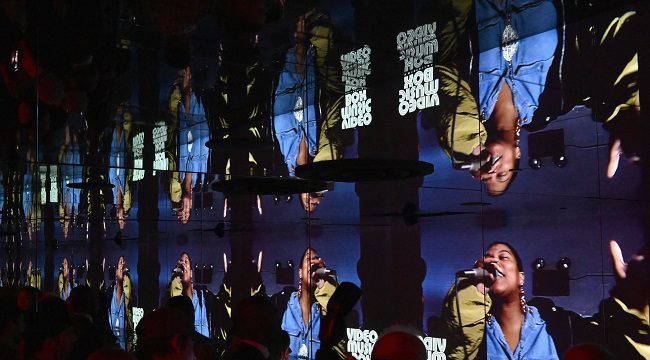Entertainment
50 Years of Hip Hop: From the East to the West to Southern Trap

Hip hop is a genre, a culture, and a way of life all rolled into one. It has influenced pop music seismically and has gone from the block party to the billionaire’s club. The dominant musical movement had a quick, chaotic evolution that rocked the long-resisted industry establishment while thoroughly capturing the teenage culture.
Over the course of its 50-year history, American hip hop has evolved in a variety of ways, defying classification—from the disco samples of old school hip hop to the deadpan delivery of today’s drill.
However, trends have started to form; the list that follows includes some of hip hop’s most notable stages.
- Traditional –
The oldest commercially released music in the genre is what is now generally referred to as old school hip hop, and it mainly refers to tracks released between about 1979 and 1983.
After being released on September 16, 1979, “Rapper’s Delight” by The Sugarhill Gang became the first hip hop song to be commercially successful. It is included in the National Recording Registry of the Library of Congress.
When Grandmaster Flash and the Furious Five’s 1982 song “The Message” was published, it introduced a socially aware edge to the genre by providing a gritty image of urban life and the strains of poverty.
Grandmaster Caz, DJ Kool Herc, Melle Mel, and Afrika Bambaataa were among of the other renowned performers active at the time.
the East Coast
The “golden age” of hip hop, which encompassed the 1980s and early 1990s, was greatly influenced by New York and the East coast.
With a number of significant firsts for the genre, Run-DMC was one of the most influential acts of the time.
Compared to their disco-tinged forebears, they, the Beastie Boys, and Public Enemy delivered tougher versions of hip hop. The latter gained notoriety for its political themes, such as racism and Black power.
Acts like Eric B. & Rakim, LL Cool J, Nas, Big Daddy Kane, and The Notorious B.I.G. received widespread recognition for their use of clever wordplay, quick delivery, and elaborate metaphors.
While this was going on, De La Soul and A Tribe Called Quest were leading the way in “alternative hip hop,” incorporating jazz and R&B influences.
For women, Salt-N-Pepa, Foxy Brown, and Lauryn Hill broke down barriers; Hill in particular made melodic rapping mainstream.
Following the 1994 publication of his seminal debut album “Ready to Die,” also known as “Biggie,” and with the support of Puff Daddy’s “Bad Boy Records,” The Notorious B.I.G., also known as “Biggie,” rose to prominence as the king of the East Coast until his shocking murder in 1997.
Additionally, the Wu-Tang Clan helped spread East Coast styles that emphasised sharp edges and powerful beats.
the West Coast
Fast and electronica-influenced, DJs predominated over raps in California’s burgeoning sounds.
In the late 1980s, Ice-T helped establish West Coast and gangsta rap, and in 1988, N.W.A’s album “Straight Outta Compton” achieved platinum status.
N.W.A. made waves for exposing experiences of pervasive racism and harsh police despite being dogged by controversy and censorship for profane songs that many claimed were misogynist while also celebrating drug use and crime.
After the trio split up, Dr. Dre and Ice Cube achieved success on their own.
Prior to his 1996 murder, which occurred just months before Biggie’s, Tupac Shakur, one of the finest rappers of all time, likewise preached words of injustice.
Being a landmark album of the time, Dr. Dre’s “The Chronic” paved the way for new directions in rap.
It also featured one of Dr. Dre’s most well-known protégés, the young rapper Snoop Dogg, whose debut album “Doggystyle” was a Dre creation and whose laid-back, windows-down lyrical delivery would come to symbolise G-Funk.
Eminem is another well-known figure who Dre helped create.
With gangster rap, G-funk, and Eminem, Dr. Dre “is a creator who has moved popular culture three times,” according to business titan Jimmy Iovine.
Bling and Progressive
With the advent of the new millennium bling age, Biggie’s commercial success paved the way for other East Coast musicians like Jay-Z, DMX, Busta Rhymes, and 50 Cent.
Years before Jay-Z would become one of hip hop’s billionaires and an industry tycoon, his song “Hard Knock Life (Ghetto Anthem)” became a huge smash.
Kanye West and other producers rose to prominence as a result of his work.
In his early career, West received almost universal praise, in part due to the way he incorporated house, electronica, and soul into daringly inventive productions.
And although Drake added R&B sensibilities and produced song after hit, Nicki Minaj was acclaimed for her ability to change styles and rapid flow.
Kendrick Lamar rose to prominence as one of modern music’s most influential lyricists, with his lines providing both systemic and personal insight, all set to jazz-influenced instrumentals.
Lamar, West, and Common all rose to prominence as torchbearers for progressive rap, which is essentially characterised by an emphasis on social injustice and reform.
Hip hop was also thriving in the South, with performers like Outkast, Missy Elliott, and 2 Live Crew gaining popularity.
- Drill and Trap
Atlanta, the birthplace of the trap subgenre characterised by cymbal patterns and synthetic percussion, became the centre of rap in the 2010s.
With its impact extending into pop, EDM, and Latin America’s immensely popular reggeaeton, trap continues to be one of the most well-liked musical genres in the United States.
The phrase “the trap” refers to areas where drugs are sold, and most of its lyricism was about living there.
Its popularity was increased by artists like Outkast, T.I., Gucci Mane, and Lil Wayne, while the eccentric Young Thug rose to become one of modern hip hop’s most imitated figures.
Superstars with a trap influence nowadays, like Migos, Cardi B, and Megan Thee Stallion.
A number of modern styles, such as “Soundcloud rap,” whose anguished, jagged sound brought vulnerability to hip hop, have benefited from internet virality.
And the similarly sinister drill has revived the gangsta lyricism’s combative appeal. It started to develop in Chicago, moved to Britain, and then reemerged in New York.
Brooklyn drill became popular due to the work of artists like the late Pop Smoke and Fivio Foreign, and now it is being taken viral by talents like the Bronx’s Ice Spice.
